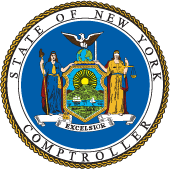State Contract and Payment Actions in October
In October, the Office of the State Comptroller approved 1,469 contracts for state agencies and public authorities valued at $44.7 billion and approved nearly 12.4 million payments worth nearly $12.4 billion. The office rejected 112 contracts and related transactions valued at $2.2 billion and nearly 7,800 payments valued at more than $21.7 million, primarily for mistakes, insufficient support for charges, and improper payments. More information on these contracts and payments is available at www.openbooknewyork.com.
